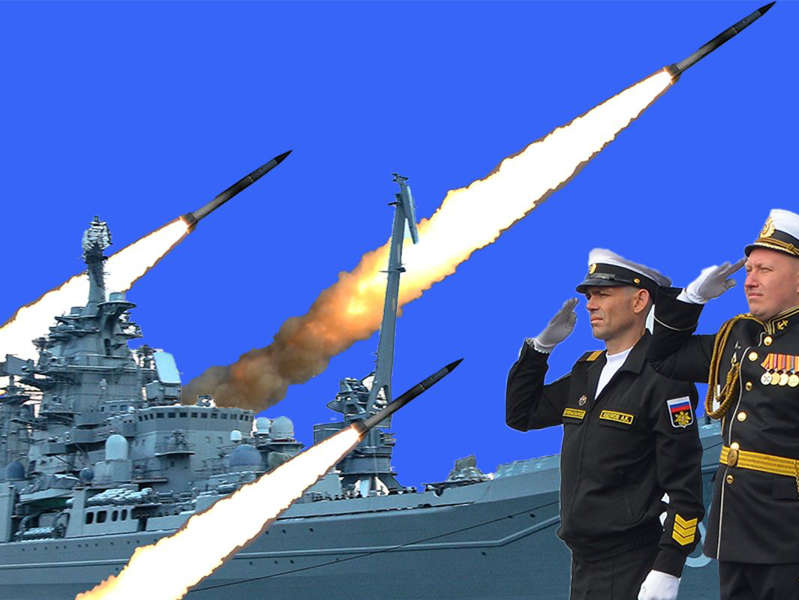
The adoption of the Zircon hypersonic missiles will take the Russian Navy to an entirely new level.

Rambler
Zircon is our trump card for a very serious future, it takes the Russian fleet to a new level. The characteristics of the complex have not yet been surpassed by anyone, '' Andrey Dyachkov, general director of the Northern PKB, said in an interview with TASS.
Ships armed with missiles, he said, will remain the backbone of all the Navy for a long time to come. Accordingly, the advantage will be given to the one who will have the most advanced missile systems and their carriers.
The Northern Design Bureau designed the frigate “Admiral of the Fleet of the Soviet Union Gorshkov”, which is participating in the tests of the “Zircon”. In particular, the first rocket launch was made from the ship. On tests, the weapon showed a speed of more than Mach 8 and hit targets at distances from 350 to 1000 kilometers.
“In total, four launches were carried out, all the missiles hit” a peg, “a source in the military-industrial complex told the agency earlier. The rockets call the center of the target a “peg”.
Putin: Zircon hypersonic missiles will soon be on alert
The Zircon hypersonic missiles will be on alert in the near future, Russian President Vladimir Putin said during his annual message to the Federal Address. He added that the Sarmat heavy intercontinental ballistic missile (ICBM) will enter service in 2022.
Speaking about the international agenda, the President noted that Moscow invites the world community to discuss strategic and global stability and create an environment of conflict-free existence.
According to Putin, the Russian Federation has its own interests, it is ready to defend them within the framework of international law, as other states do. Putin drew attention to the fact that the Russian Federation is behaving with restraint, but the West continues to “cling” to it under any circumstances. In addition, he promised that the response to any provocations from the outside would be quick and tough. Those who try to direct their efforts against the country will feel this for themselves.
Putin expressed the hope that no country would dare to cross the red line in relations with the Russian Federation. The President stressed that Moscow itself will determine where such a line will pass. He also added that the organizers of any provocations against the Russian Federation “will regret it as they have not regretted anything for a long time.”
The Ministry of Defense told when the serial deliveries of “Zircons” will begin
Serial deliveries of Zircon hypersonic missiles to the Russian Armed Forces will begin in 2022, said Deputy Defense Minister Alexei Krivoruchko.

Rambler
“Serial deliveries will begin in 2022,” he said on Friday during the Single Day of Acceptance of Military Products.
Earlier, within the framework of flight design tests, the Zircon missiles were launched from the frigate “Admiral Gorshkov”. During the tests, a speed of over 8 Machs was reached, the deputy minister recalled.
“The positive results allow us to proceed to the next stage of development – to carry out launches from submarine carriers, complete state tests in 2021 and start serial deliveries,” Krivoruchko said.
The Zircon hypersonic cruise missile was fired by the frigate Admiral of the Soviet Union Fleet Gorshkov in October, November and December last year.
“Zircon” is a Russian hypersonic anti-ship cruise missile developed by JSC “VPK” NPO Mashinostroyenia “, which is part of the 3K22” Zircon “complex. The fundamental difference of this missile is the significantly higher (up to M = 8) flight speed, both in comparison with other Russian anti-ship missiles and with anti-ship missiles in service with other countries.
Project 22 350 frigate “Admiral of the Soviet Union Fleet Gorshkov” with guided missile weapons was included in the combat strength of the Russian Navy in the summer of 2018. The ship's crew is over 170 people. The frigate can reach speeds of up to 29 knots. It is armed with Onyx and Caliber missiles, as well as Polyment-Redut anti-aircraft missile systems.
The frigates of project 22 350 are ships of the far sea zone – carriers of high-precision weapons. They are capable of operating effectively both individually and as part of diverse groupings of the Russian Navy.
They have a total displacement of 5,400 tons, length – 135 m, width – 16 m, can reach speeds of about 30 knots. The cruising range of frigates of the project is 22,350 – 4,500 miles, autonomy – 30 days, crew – about 200 people.
Russian rocket “Zircon” will be tested under water
The Russian Zircon hypersonic missile is planned to be used in 2021 from the Project 885 Yasen nuclear submarine K-560 Severodvinsk.
According to a source in the military-industrial complex, the military intends to make at least one launch of weapons from the submarine “from the surface position and at least one from the underwater one.” After that, a decision will be made on the adoption of the Zircon missiles into service both as part of surface and as part of underwater carriers, RIA Novosti reports.
Prior to this, test launches of Zircon from a submersible stand have already been carried out.
Russian Pacific Fleet will receive six corvettes with “terrifying” weapons
Until 2028, the Russian Pacific Fleet will receive six corvettes capable of carrying Zircon hypersonic missiles. This was reported by Interfax with reference to the Ministry of Defense.
According to the contract with PJSC Amur Shipyard, the Pacific Fleet from 2024 to 2028 will receive two corvettes of project 20380 and four corvettes of project 20385.
The ministry said that these modern ships are equipped with the latest MFRLK radar system, the Redut anti-aircraft missile system, the Uran anti-ship complex, the Paket-NK anti-submarine missile system and universal launchers – they are capable of carrying Zircon missiles. In October, the American magazine Popular Mechanics wrote that the speed of the Zircon was appalling, but the US Navy is looking into intercepting the weapon.
The amount of the contract is currently unknown, but earlier it was reported that 22.6 billion rubles would be spent on the manufacture of the lead ship of the project 20385 “Thundering”.
Russian President Vladimir Putin announced in October 2019 that the Project 20385 “Thundering” corvette, which is being built for the Russian Pacific Fleet, will receive a Zircon hypersonic missile. The patrol ships of the near sea zone (corvettes) of the project 20380 are designed to combat surface ships and submarines, as well as for fire support during amphibious operations.
US military worried about lack of information on Russian nuclear weapons
The American side is concerned about the lack of information on the scale and location of Russia's nuclear arsenal, which is not included in the Treaty on Measures for the Further Reduction and Limitation of Strategic Offensive Arms (START, unofficially known as START-3). This was stated by the head of the US Strategic Command (STRATCOM), Admiral Charles Richard, RIA Novosti reports.
According to him, the extension of the agreement “provides the necessary transparency and predictability” of the Russian arsenal. At the same time, “there remains a significant level of uncertainty about the scale and location” of non-START 3 systems, Richard added. The head of STRATCOM said that Russia “is capable of producing hundreds of warheads annually,” and therefore such a lack of data “causes concern.”
Richard also noted that Russia's new weapons – such as the strategic Burevestnik complex, the Avangard missile system, the Zircon hypersonic cruise missile and the Poseidon nuclear submarine – are changing the nature of its nuclear complex, TASS reports. The admiral stressed that in the past there is a period when the United States could carry out a projection of force abroad without significant resistance from other countries.
On April 6, it was reported that Russia and the United States disclosed data on the number of missiles and nuclear warheads for the first time since the extension of START III.
Moscow and Washington exchanged notes on the extension of the START Treaty on February 3. The missile treaty will operate as signed until February 5, 2026.
A tanker plane preparing for an emergency landing near Moscow
When it all ends: Russians will be left without legal taxi drivers
“Such a performance”: the Russian Foreign Ministry criticized the Czech ultimatum

